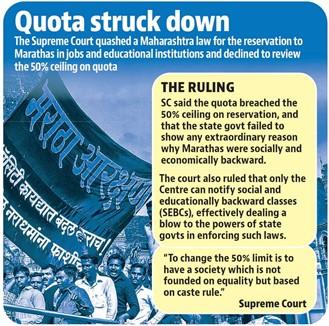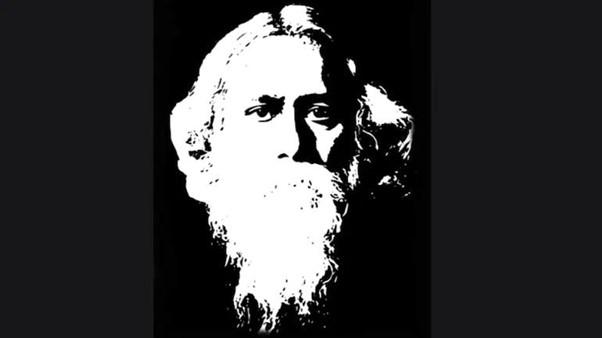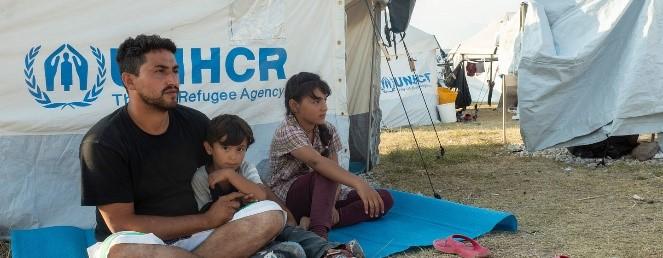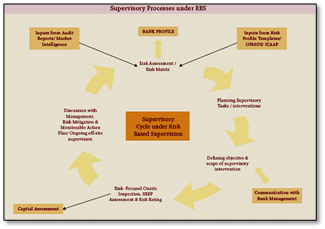Friday, 7th May 2021
RBI package for Covid 2.0
In News
RBI Governor announced a slew of liquidity and restructuring measures, aimed at offering emergency relief to the COVID-hit MSMEs and small borrowers and ease access to healthcare services.
Measures Announced
|
Measure |
Description |
|
G-SAP |
The RBI would be buying Rs 35,000 crore of bonds from the secondary market on May 20. This will be part of the Rs 1 trillion Government Securities Acquisition Programme (G-SAP) scheduled for the quarter, of which Rs 25,000 crore has already been done. |
|
Emergency health services loans |
The Rs 50,000 crore emergency health services loans, which can be given by banks till March 31, 2022, will be classified as priority sector loans for three years or repayment, whichever is earlier. o Priority sector loans are exempted from maintaining cash reserve or statutory liquidity ratios, and so banks can extend them at concessional rates too. |
|
Covid loan book |
Banks can avail of the funds at repo rate, currently at 4 per cent, for providing fresh loans to a wide range of entities related to Covid care. Banks can lend this amount directly, or through intermediaries, and should create a 'Covid loan book’ under the scheme. |
|
Surplus liquidity |
To incentivise the lenders, the RBI said banks would be eligible to park their surplus liquidity up to the size of the Covid loan book with the RBI at repo rate minus 25 basis points, or at 3.75 per cent. o Presently, banks park their excess funds at the reverse repo rate, which is 3.35 per cent. |
|
Restructuring of Loans
|
To ease the Covid stress, the RBI governor extended another round of restructuring for individual borrowers and small businesses. o Such borrowers with a loan outstanding of up to Rs 25 crore, and who did not avail of moratorium or restructuring relief last year, can ask for restructuring of their loans for up to two years. o The window remains open up to September 30, and banks will have to do the restructuring within 90 days of receiving the request. For this purpose, loans that were standard as on March 31 will be considered. o Individual borrowers and small businesses that availed of the facility last year but allowed restructuring of less than two years can now demand to stretch their repayment period up to two years. |
|
Special long term repo operation window |
The RBI also opened up a special long term repo operation window for small finance banks (SFB), whereby the banks can borrow funds up to Rs 10,000 crore at repo rate for deploying for fresh loans of up to Rs 10 lakh per borrower. o Loans given by SFBs to small microfinance institutions (MFIs) that have asset size of up to Rs 500 crore will now be considered under priority sector. Banks don't need to maintain CRR or statutory liquidity ratio (SLR) on their priority sector loans. |
|
For State governments |
To enable the State governments to better manage their fiscal situation in terms of their cash flows and market borrowings, maximum number of days of overdraft (OD) in a quarter is being increased from 36 to 50 days and the number of consecutive days of OD from 14 to 21 days |
|
Other measures
|
The RBI has also extended some measures taken last year for banks and other entities to ease the pain related to the resurgence of the pandemic. o The RBI has allowed banks to exclude loans up to Rs 25 lakh given to the micro, small and medium enterprises from its net demand and time liabilities (NDTL) for the purpose of calculating cash reserve ratio (CRR). This scheme was to end on October 21, now it can be done till December 31. o Banks were also allowed to use 100 per cent of their floating provisions set aside as buffers for bad times to cover their specific bad debts. |
Significance of the Package
- Proactive Measure: With India’s economic recovery threatened by the COVID-19 second wave, the Reserve Bank of India stepped in with measures aimed at alleviating any financing constraints for healthcare infrastructure and services, as well as small borrowers who may be facing distress due to a sudden spike in health expenditure and has shown itself to be both proactive and prudent in its response to the second wave.
- Help to small borrowers: In structuring this package, the RBI has taken care to precisely target small borrowers in the informal sector, micro enterprises and self-employed folks who are likely to be worst hit by the localised lockdowns across the country.
- Responsible move: The RBI has also been mindful of its responsibilities as a regulator by wisely veering away from blunt instruments such as blanket loan moratoriums, interest waivers and loan classification standstills. Such measures dispense relief to borrower segments that don’t need them and needlessly peg up risks for bank depositors and investors.
- Immediate Relief: The special liquidity window of ₹50,000 crore is a sound move to provide immediate funding to sectors that are struggling to scale up to meet unprecedented demand.
- Multiplier Effect: Credit support, as opposed to direct grants, creates a multiplier effect, matches relief to genuine need and prevents a few high-profile entities from cornering incentives.
- The RBI has sweetened this deal with a priority sector tag and an extra 40 basis point spread for banks parking their Covid loan surpluses in reverse repo.
Sources: https://www.thehindubusinessline.com/opinion/editorial/easing-the-pain/article34491755.ece
Biomedical waste generation at maximum as Covid-19 cases surge in Delhi
In News
Due to the increase in Covid-19 infections over the past several weeks, Delhi is facing a massive surge in biomedical waste. According to Biotic Waste Management, one of the largest common biomedical waste treatment facilities in Delhi, Covid-19 waste generated has increased from 7.2 tonnes per day to 12.5-13 tonnes per day in a year.
Emerging issues in biomedical waste management due to Covid
- Rising cases not limited to hospitals: Biomedical waste is not confined to hospitals and quarantine centres alone. The cases are rising at such a fast pace that households are producing much of the biomedical waste and it is not being disposed of in a safe manner. The waste from patients in home isolation is not being collected separately as biomedical waste.
- Negligent disposal: The negligence in the disposal of masks, gloves and other hazardous biomedical waste across the cities has also become a reason for spread of infections.
Challenges in waste management due to Covid
Environmentally sound management of medical waste is a key challenge during normal times in many countries. During crises like Covid 19 these challenges are magnified.
- Lack of data: There is lack of sufficient data on medical waste amounts likely to be generated and on treatment infrastructure at national level, both of which are required for the government to develop strategies. There is no available framework to track the generation of biomedical waste in the wake of the pandemic across the country, particularly in Tier 2 and 3 cities.
- Lack of geographical identification: One of the challenges in Covid 19 waste management is the lack of identification of hotspots for medical waste generation and segregation points and travel routes for transfer, storage, treatment and final disposal.
- Lack of knowledge or capacity: Covid 19 has led to a rapid increase in the amount of medical waste generated. There is often a lack of knowledge or capacity to conduct assessments to provide an accurate forecast of the quantities of medical waste likely to be produced.
- Involvement of informal sector in waste management: The situation is more challenging in contexts where waste management is heavily dependent on the informal sector, which often employs some of the most vulnerable people like migrants, slum dwellers and urban poor, as well as in informal settlements or in camps and camp-like settings.
- Health risks for waste collectors: The virus can survive on various kinds of objects like cardboard, plastics and stainless steel for about 72 hours. The concern that this creates for sanitation workers and informal sector waste collectors cannot be neglected. In the absence of proper training regarding safety issues the health risk on sanitation workers cannot be ignored.
Measures to deal with increased biomedical waste
- Adopting the guidelines released by CPCB: The Central Pollution Control Board has issued detailed guidelines on handling Covid linked biomedical waste and also launched a dedicated mobile App to track the collection and disposal of waste. The guidelines have specified scientific ways to collect, transport and dispose of such waste and the state pollution control boards/committees have to adhere to the guidelines and monitor the process.
- Innovation in waste management: Given the increased amount of waste generation, there is a need to incentivise start-ups and Small and Medium Enterprises for offering innovative solutions for waste segregation and treatment.
- Awareness and Training campaigns: The government needs to introduce appropriate programmes on Doordarshan, All India Radio and other platforms for creating awareness about the correct disposal of biomedical waste. As many state governments have assigned the task of biomedical waste collection to empanelled private agencies, it is important to provide Covid specific training to the workers engaged in collection and segregation activities.
Question- Biomedical waste generation during covid times has added to the concerns of heath management. In light of the situation, enumerate the issues related to biomedical waste generation and suggest measures to overcome the challenge.
Source
Supreme Court Verdict on Maratha Quota
In News
A five-judge Constitution Bench of the Supreme Court struck down the Maharashtra law granting reservation to the Maratha community in admissions and government jobs in the state.
About the Verdict
- Unconstitutional: The SC unanimously declared a Maharashtra law which provides reservation benefits to the Maratha community, taking the quota limit in the State in excess of 50%, as unconstitutional.
- The contentious law: The SC struck down the Maharashtra State Reservation for Socially and Educationally Backward Classes (SEBC) Act, 2018 which extended reservation to the Maratha community in public education and employment in excess of the ceiling limit of 50% fixed by the SC earlier.
- The Marathas are dominant forward class and are in the mainstream of National life. The above situation is not extra-ordinary.
- Background: The ruling by a nine-judge Bench in the 1992 landmark ruling in Indra Sawhney v Union of India, in which the Mandal Commission report was upheld, laid down two important precedents.
- First, it said that the criteria for a group to qualify for reservation is social and educational backwardness.
- Second, it reiterated the 50% limit to vertical quotas reasoning that it was needed to ensure efficiency in administration. However, the court said that this 50% limit will apply unless in exceptional circumstances.
- Identification of Socially and Economically Backward Communities (SEBC): In the task of identification of SEBCs, the President shall be guided by the Commission set up under Article 338B; its advice shall also be sought by the state in regard to policies that might be framed by it. The final determination culminates in the exercise undertaken by the President.
- Background: A Constitution Amendment Act had introduced Articles 338B and 342A in the Constitution. Article 338B deals with the newly established National Commission for Backward Classes.
- Article 342A empowers the President to specify the socially and educationally backward communities in a State. It says that it is for the Parliament to include a community in the Central List for socially and backward classes for grant of reservation benefits.
- Rejected other such Pleas: The SC rejected a plea made jointly by several states such as Maharashtra, Karnataka, Bihar, Tamil Nadu, Punjab, Rajasthan and Andhra Pradesh that opposed any upper limit on reservation and sought a reconsideration of the 1992 verdict to enable them to extend the quota beyond 50% in view of the changed times.

Significance of the Ruling
- Principle of equality: The 50% rule is to fulfil the objective of equality as engrafted in Article 14 and with the object to strike a balance which cannot be said to be arbitrary or unreasonable. To change the 50% limit is to have a society which is not founded on equality but based on caste rule
- In fact, the Supreme Court held that a separate reservation for the Maratha community violates Articles 14 (right to equality) and 21 (due process of law).
- If the reservation goes above 50% limit, which is a reasonable, it will be slippery slope, the political pressure, make it hardly to reduce the same.
- Increase the size of the pie, not the number of divisions: The SC highlighted that though the quota benefits have been granted until now as affirmative measures to bring equality in society, reservation in public services was not the only means and method for improving the welfare of backward class.
- The State ought to bring other measures including providing educational facilities to the members of backward class free of cost, giving concession in fee, providing opportunities for skill development to enable the candidates from the backward class to be self-reliant.
- Learning for other communities: This also brings a moment of reckoning for various other communities, for instance the Patidars in Gujarat, who, in the wake of a deepening distress due to structural transformations in the economy, have been mobilising for quotas.
- The Constitution has envisaged reservation as an instrument to address historical injustice and discrimination. Ways must be found, however, to address other kinds of disenfranchisement and disadvantage as well.
- Impact on other states: The ruling is likely to have an impact on several laws passed by various state assemblies reserving in excess of the 50% ceiling under the category of “extraordinary circumstances”. The ruling may also have an impact on the reservations for economically weaker sections (EWS), introduced by the Central government, in excess of the 50% ceiling.
Reservation in India
- Origin: Post-independence, the reservation was only provided with the scheduled castes and the scheduled tribes. Following the findings of the Mandal Commission, OBCs were included within the reservation list in 1991.
- Basis for reservation as per the Constituent Assembly debates: Reservation was considered as the only option to ensure entry and adequate representation of the candidates of SCs and STs in the state apparatus because it was not economic poverty but caste that accounted for deprivation of some communities in the government jobs.
- The entire debate on reservation centred on social backwardness and the victims of various forms of caste-based discrimination. But such people were bound to be poor too. Therefore, reservation was never aimed at economic empowerment of the poor. The idea was always to disavow caste-monopoly in the public sector.
- Legal provisions for reservation: The provisions stated under Article 15(4) and 16(4) of the Indian Constitution allow the Central, and the State Government to reserve seats for the SCs, and STs for government services.
- Following this, in the 77th Constitution amendment Act, clause 4(A) was introduced in Article 16 in which allowed the government to provide reservation in promotions. This clause was later edited in the 85th amendment to accommodate for the consequential seniority for the SCs, and STs promoted.
- Other provisions of the Constitution, namely Articles 330 and 332, 243D, 335 also mention the specific reservations for proper representation of the minorities in the Panchayats, the Parliament, and the municipalities.
- The Constitution (103rd Amendment) Act 2019 passed by Parliament enables the State (i.e., both the Central and State Governments) to provide reservation to the Economically Weaker Sections (EWS) of the society.
Way Forward
- The social scientific evidence for the positive effects of reservation is strong and getting stronger, as caste discrimination remains common in rural India. Even after nearly a century of quotas, caste is highly predictive of socioeconomic outcomes despite accounting for other factors such as parental occupation and education.
- Though positive discrimination can lead to important advances in societies with deep-seated social inequalities, but that such systems must be periodically examined and redesigned.
Question- Analyze the reasons that cause reservation in jobs and education to be an integral part of Indian political system. Suggest some alternatives available that could fulfil the objectives of inclusive growth of all sections of Indian society?
Sources:
https://indianexpress.com/article/explained/maharashtra-maratha-quota-supreme-court-verdict-7303546/
https://thewire.in/law/maratha-quota-case-sc-declares-reservation-over-50-as-unconstitutional
https://www.hindustantimes.com/opinion/redesigning-india-s-reservation-system-101615561660236.html
This Day in History- Rabindranath Tagore was born

On May 7, 1861, Rabindranath Tagore was born in Kolkata to Debendranath Tagore and Sarada Devi. Tagore is also known as Gurudev, Kabiguru, and Biswakabi for his contribution to literature and poetry. Tagore is also known as the “Bard of Bengal”. In 1913, he became the first Indian and first Asian Nobel laureate and also the first non-European to win the Nobel Prize in Literature. Some of his well-known literary work includes Gitanjali, Choker Bali, Kabuliwala and Gitabitan. The national anthem of India was originally composed as Bharoto Bhagyo Bidhata in Bengali by polymath Rabindranath Tagore.
Image of the day- Olive Ridley turtle

This is the image of thousands of Olive Ridley turtle hatchlings that emerged at the nesting site in Nasi-1 and 2 islands of Gahirmatha marine sanctuary, the world’s largest rookery of endangered Olive Ridley sea turtles within Bhitarkanika National Park. After emerging from the pits, the turtle hatchlings started their journey towards the sea. Every year, the female Olive Ridley turtles come ashore, dig a nest with their flippers before laying about 100 eggs. After this, they conceal the nests before returning to the sea. The Olive ridley turtles are the smallest and most abundant of all sea turtles found in the world, inhabiting warm waters of the Pacific, Atlantic and Indian oceans.
Asiatic Lions
- Context: Eight Asiatic lions test positive for coronavirus in Hyderabad’s Nehru Zoological Park.
- It is thefirst known case of covid-19 transmission from humans to the felines in India. Earlier in 2020, a tiger was infected with Covid 19 in New York (Bronx Zoo).
- The Asiatic Lion (also known as the Persian Lion or Indian Lion) belongs to Panthera Leo Leo subspecies that is restricted to India and areslightly smaller than African lions.
- At present Gir National Park and Wildlife Sanctuary is the only abode of the Asiatic lion.
- It is vulnerable to unpredictable eventssuch as a plague or a natural disaster, poaching etc.
- It is Endangered under IUCN Red list and occupies position in Schedule I of Wildlife Protection Act 1972.
- The “Asiatic Lion Conservation Project” has been launched by theUnion Ministry of Environment, Forests and Climate Change (MoEFCC) for the period 2018 to 2021.

Primary source: https://www.thehindu.com/news/cities/Hyderabad/eight-asiatic-lions-test-positive-for-coronavirus-in-hyderabad-zoo/article34480453.ece
Nitrogen dioxide
- Context: A recent study concluded that long term exposure to NO2 pollution can affect lung function and increase the risk of pulmonary disease.
- NO2primarily gets in the air from the burning of fuel (emissions from cars, trucks and buses, power plants, etc.)
- Exposure can lead to respiratory symptoms such as coughing, difficulty in breathing, and respiratory diseases.
- NO2,along with other NOx, reacts with other chemicals, water, oxygen, etc. in the air to form particulate matter, ozone, and acid rain. It later leads to nutrient pollution in water and reduced visibility in air.
Primary source: https://www.epa.gov/no2-pollution/basic-information-about-no2#What%20is%20NO2
Beyond government: Role of new actors in India’s development cooperation - ORF
Essence- This article is written in the backdrop of how ‘Economic Diplomacy’ is changing with the time through aggressive bilateral negotiations, multilateral institutions and foreign assistance programmes. But India’s approach seemed to be different, in early years, Skill development and capacity building (in technical and economic cooperation) remained the main focus. Further, India took structuralist approach and contributed to capacity building in various countries instead of monetarist principles and later, with the introduction of substantive lines of credit added a new dimension. Recently, In the wake of the COVID-19, India developed a more dynamic and responsive approach through its medical diplomacy. But there are some challenges in its economic diplomacy & to overcome them India needs to create confidence in it being a safe destination for data processing, developing resilient infrastructure to global health, etc. Where, social enterprises and CSOs can play a major role by identifying specific areas like Tech startups, healthtech, Edtech, social entrepreneurs, etc. They have immense potential to become partners in India’s development cooperation programmes and change the development paradigm. For this India needs a development cooperation agenda that recognises the strengths and limitations of each actor can tailor programmes that address the needs across a broad spectrum of the population.
Why you should read this article?
- To understand the concept of economic diplomacy and how it has changed over the time.
- To understand how India’s approach in economic diplomacy was different from others.
- To know the concept of structuralist approach and monetarist principle and why India adopted structuralist approach.
- To get an idea of trend followed by India in its economic diplomacy over the years and what are the recent challenges we are facing.
- To know possible steps India can take to overcome these challenges.
The School of Water and Waste: Case study
Present Situation:
- Water-sensitive aspects receive little or no attention during construction of building designs and operations.
- Construction of sites leads to wasteful water use patterns leading to inefficient use of water.
- Rainwater and wastewater available at a construction site is seen as a liability rather than a resource.
Initiative taken by The School of Water and Waste:
- It encourages Water Sensitive Urban Design and Planning to address the issue for urban water cycle, water supply,
- It focusses upon rainwater harvesting, stormwater harvesting and greywater reuse projects in urban and peri-urban areas of Maharashtra and Gujarat.
Outcome:
- Issue of waterlogging has been addressed due to Rainwater Harvesting, Borewell recharge pit, rainwater recycle
- Better water storage by nearly 60 % of increase in water recharge on surface in the construction projects
- Better capture of rainfall which is important for dry states like Rajasthan, parts of Gujarat, peninsular interior
- Sensitisation of community with better awareness, education and constant support provided to The
Where can we use this case study:
- Innovative example of rainwater harvesting, best practices to be adopted while construction, case study for environmentally sustainable buildings
Question where this case study can be used?
Suggest measures to improve water storage and irrigation system to make its judicious use under the depleting scenario. (UPSC Previous Year Question: Mains 2020)
Share the article
Get Latest Updates on Offers, Event dates, and free Mentorship sessions.

Get in touch with our Expert Academic Counsellors 👋
FAQs
UPSC Daily Current Affairs focuses on learning current events on a daily basis. An aspirant needs to study regular and updated information about current events, news, and relevant topics that are important for UPSC aspirants. It covers national and international affairs, government policies, socio-economic issues, science and technology advancements, and more.
UPSC Daily Current Affairs provides aspirants with a concise and comprehensive overview of the latest happenings and developments across various fields. It helps aspirants stay updated with current affairs and provides them with valuable insights and analysis, which are essential for answering questions in the UPSC examinations. It enhances their knowledge, analytical skills, and ability to connect current affairs with the UPSC syllabus.
UPSC Daily Current Affairs covers a wide range of topics, including politics, economics, science and technology, environment, social issues, governance, international relations, and more. It offers news summaries, in-depth analyses, editorials, opinion pieces, and relevant study materials. It also provides practice questions and quizzes to help aspirants test their understanding of current affairs.
Edukemy's UPSC Daily Current Affairs can be accessed through:
- UPSC Daily Current Affairs can be accessed through Current Affairs tab at the top of the Main Page of Edukemy.
- Edukemy Mobile app: The Daily Current Affairs can also be access through Edukemy Mobile App.
- Social media: Follow Edukemy’s official social media accounts or pages that provide UPSC Daily Current Affairs updates, including Facebook, Twitter, or Telegram channels.





